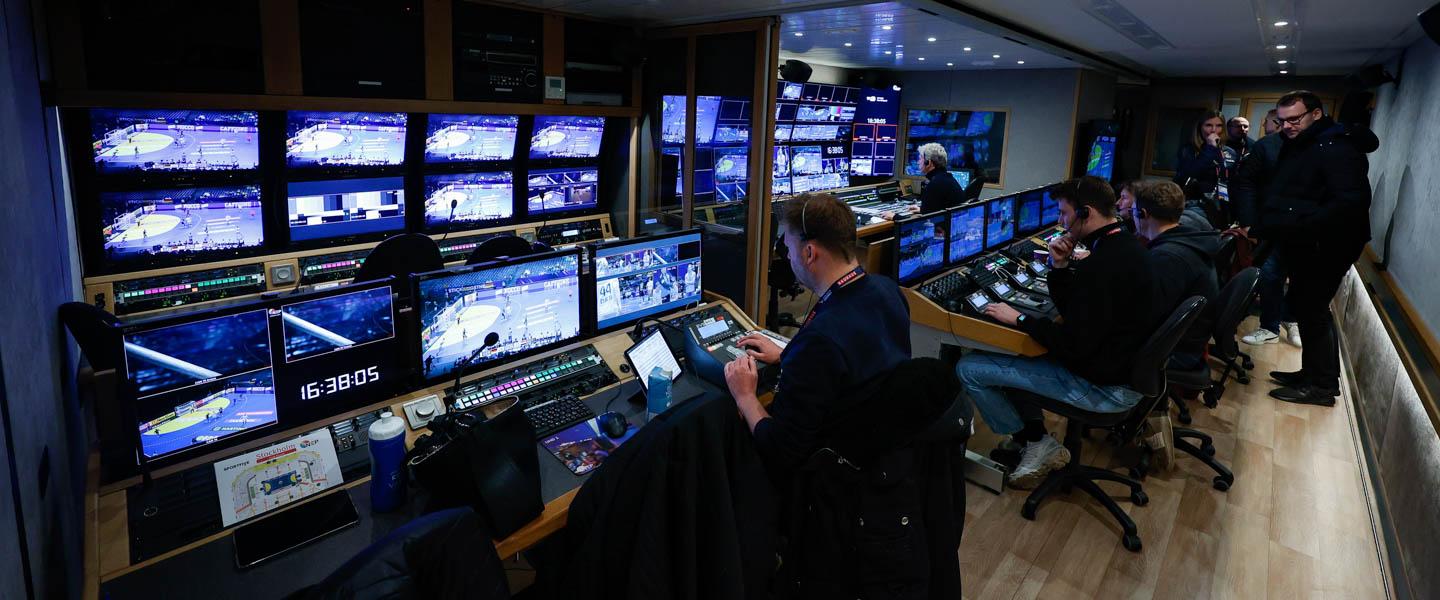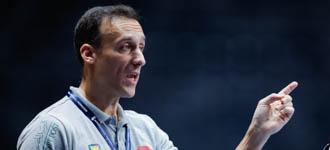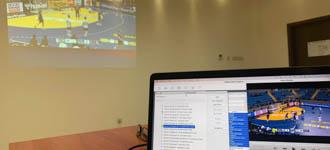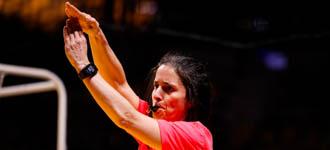‘A permanent evolution’ – handball fans get even closer to world championship action
28 Jan. 2023

As the 28th IHF Men's World Championship draws to a close in Poland and Sweden, the action on court is heating up to a boiling point.
For the global audience watching on television, phones, computers and a myriad of other devices, it can almost feel like they are on court with their heroes, standing alongside the world's best handball athletes performing at their top level.
And all of this is down to an army of experienced, passionate, hardworking staff who continue to push the boundaries of what is possible with handball broadcasting.
"It's fair to say that, as a camera set-up, it's the most ambitious IHF World Championship set-up so far," says Carsten Richter, Senior Director, Media – Global Key Accounts for SPORTFIVE, the Official Media and Marketing Partner of the IHF, who is responsible for ensuring the sport can be seen around the world.
"As usual, we're using a state-of-the-art camera set-up which changes – depending on venues – through each round, starting with the minimum of 14 cameras for the preliminary round matches and ending up with at least 19 cameras and other special devices for the final weekend.
"We have an aerial device for the final matches as well as moving devices around the field of play, all manned by dedicated, professional camera operators who are specialists in these kinds of camera formats," he adds.
"Behind each goal is a very important camera. We have super slow motion cameras and cameras at the nine-metre mark to provide different angles and get the spectators as close as possible to the action."
Sports fans who watched the recent FIFA World Cup in Qatar will be well aware of the fan shots and cutaways which brought a new, added depth and human element to the broadcast.
And this also features at Poland/Sweden 2023.
"From the quarter-finals on, we are using a cinematic camera. It's something we use for special shots on the benches, for team time outs or for showing the spectators – it's what people may have seen at the FIFA World Cup. It's very focused on individuals and brings the viewer closer like they're looking at the event through their own eyes," explains Richter.
"It's part of what I call the 'permanent evolution'," he adds. "We always are state-of-the-art, we were not the first to bring this into sports, but it's just a matter of improving and growing with the handball setting. It's the way you do a TV production in 2023."
With the 2023 IHF Men's World Championship taking place in two countries and across nine venues, it has been a big logistical and planning challenge, and Richter is quick to praise not only the two organising committees for their help, but also his large group of staff behind-the-scenes for a smooth production so far.
"There are way more than 300 people involved in the entire operation, starting with Sven Harke, our Production Manager," he explained.
"In addition, we have technical and creative crews, including our virtual directors, camera crews, EVS operators, graphics teams, satellite teams and the SPORTFIVE media and marketing teams at all venues. More venues mean we need to recruit more staff; we need more equipment and have more of everything moving around.
"However, with the help of the organising committee, combined with a truly experienced international team of experts from all over the world - who are used to working at the Olympic Games, various World Championships and FIFA World Cups – it has been a pleasure to work at."
Planning for Poland/Sweden 2023 already started back at the 2021 IHF Women's World Championship in Spain in December. Between then and the beginning of this championship, there were three official site inspections involving the IHF, SPORTFIVE and finally the broadcasters.
And with 32 teams and five continents represented, there has been interest from all around the world to secure the rights to show the matches, including some new partners.
"It's a privilege to work with all the major broadcasters from Germany, France as well as the Scandinavian and Balkan regions, but at the same time, we are extremely happy to have Viaplay in the Netherlands on board as this is fantastic to keep developing, the same goes for VRT and RBTF in Belgium. We also have a fantastic partner in the United States, with ESPN," said Richter.
"When we agreed on our partnership with the IHF, it was important for both of us to commit towards helping grow the sport; we want to go to sporting markets where we know the IHF is holding major events.
"For example, in Belgium, we have both public broadcasters as partners, which is fantastic," he added.
"We want them to get close to handball and help them understand what opportunities they have. Development work is part of our job; to educate and to help broadcasters understand the sport and understand their possibilities in terms of handball coverage."
Part of that development work is providing English-language commentary for specific matches delivered by experienced voices working on-site, in person, at the championships.
"We are a service partner for our rights-holders and we understand that it can be a challenge for some to bring their own people to events far away," explains Richter.
"It's important that we help them by providing an English-language commentary with, for example, Paul Bray, who is the voice of handball, it's something which is a matter of courtesy and service."
With the IHF and SPORTFIVE announcing a partnership until 2031 last year, it means that the global development of the sport through its media opportunities can only keep growing.
"If you work for the long term, it's way more sustainable. It really helps you to grow something sustainably," concludes Richter.






